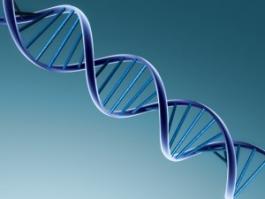Co vše lze zjistit ze slin?
 Jako hudba budoucnosti vypadají nejnovější výsledky výzkumu slin. Ty totiž naznačují, že místo rozboru krve nám bude prováděn rozbor slin a výsledky budou k dispozici na PC? Nevěříte?
Jako hudba budoucnosti vypadají nejnovější výsledky výzkumu slin. Ty totiž naznačují, že místo rozboru krve nám bude prováděn rozbor slin a výsledky budou k dispozici na PC? Nevěříte?Již několik let se rozbor slin ukazuje jako velice slibný zdroj informací o celkovém zdraví organizmu. Rozbor slin je totiž výhodný z mnoha důvodů. Pro odběr vzorku není třeba žádných vpichů jehlou, je tedy bezbolestný. Odběr nevyžaduje odbornou zručnost a může být proveden v klidu domova.
Sliny jsou v centru zájmu nového diagnostického trendu zvaného salivaomika (v angl. salivaomics), neboli nauka o slinách. V dubnu tohoto roku odstartovala Americká společnost pro dentální výzkum nový projekt nazvaný „Vědecká základna pro salivaomiku“ (Salivaomics Knowledge Base – SKB), který poskytuje informace rozboru slin dobrovolníků. V databázi je v současnosti 1166 různých proteinů a biomarkerů, podle kterých se dají rozpoznat nejrůznější patologické procesy v našem organizmu. Databáze se neustále rozšiřuje o nové biomarkery. Možná již brzy tedy budeme své zdraví kontrolovat podle rozboru slin na svém PC prostřednictvím internetu.
Informace o článku
| Vloženo: | 20:55 29.3. 2010 |
| Čtenost: | 59173x |
Diskuze článku
| Status: | Otevřená všem |
| Počet příspěvků: | 107340 |
Poslat příspěvek
Diskuze k článku
| Richardwar | 17:36 16.12.2025 | |
| Откройте мир развлекательных игр с Мелстрой Гейм – качественные и инновационные игровые решения для всей семьи <a href="https://melstroy-game.uno">mellstroy game</a> | ||
| ozshma | 17:11 16.12.2025 | |
| <a href="https://lotteryobzor.com/forum/pharmacy-online-0"></a> <a href="https://fo-rum.auc.org.ua/faq/03102025-0905"></a> <a href="https://www.castnblastadvisor.com/outfitters/pharmacy-online"></a> <a href="https://neweddingday.com/your-couple-name-2334"></a> <a href="http://prosti-proshay.ru/lyudi/pharmacy-online-7"></a> <a href="https://wibride.com/your-couple-name-2363"></a> <a href="http://www.sccu.chula.ac.th/node/920"></a> <a href="https://new.roger24.de/pharmacy-online-0"></a> <a href="https://www.internationalhumanistparty.org/es/content/pharmacy-online-13"></a> <a href="http://old.jeunescathos.org/fr/content/pharmacy-online-17"></a> <a href="https://www.globalrealtor.co.in/node/4214"></a> <a href="https://openreviewhub.org/applicant-reviewers/goodwinbustard/become-reviewer-1"></a> <a href="https://www.itconnecta.es/pharmacy-online-13"></a> <a href="http://kalyterizoi.gr/foreis/pharmacy-online"></a> <a href="http://www.le-cercle-des-sourires.fr/session/3345"></a> <a href="https://museusvalenciades.grupotecopy.es/en/node/2365"></a> <a href="https://www.lawtech.ru/content/pharmacy-online-3"></a> <a href="https://carros-usados.us/pharmacy-online-8"></a> <a href="https://sitepe.iiec.unam.mx/node/6213"></a> <a href="https://forum.auc.org.ua/faq/28092025-0606"></a> <a href="http://alabasirah.com/node/8261"></a> <a href="http://old-liege.jeunescathos.org/fr/content/pharmacy-online-72"></a> <a href="https://eventandjudge.com/node/24457"></a> <a href="http://hr-life.ru/node/53787"></a> <a href="https://slp.millingtonpubliclibrary.org/content/pharmacy-online-14"></a> <a href="http://ysrp.bnl.bm/review/pharmacy-online-11"></a> <a href="https://primfootball.com/pharmacy-online-6"></a> <a href="https://www.jobwebby.ilovemarkso.com/domainasname-anthony-gmbh/pharmacy-online-5"></a> <a href="https://carros-usados.us/pharmacy-online-8"></a> <a href="https://futbal.totalhockeymanagement.com/pharmacy-online-6"></a> <a href="https://www.onlyhomebuyers.com/for-sale-by-owner-homes/md/60"></a> <a href="http://ph-ed-plus.nspu.ru/article/17926"></a> <a href="https://museusvalenciapre.grupotecopy.es/en/node/3715"></a> <a href="http://prosti-proshay.ru/lyudi/pharmacy-online-7"></a> <a href="https://carros-usados.us/pharmacy-online-8"></a> <a href="https://oregonweddingday.com/your-couple-name-2335"></a> <a href="https://totalhockeymanagement.com/pharmacy-online-10"></a> <a href="http://kalyterizoi.gr/foreis/pharmacy-online"></a> <a href="https://www.tripmayntra.com/pharmacy-online-8"></a> <a href="https://primfootball.com/pharmacy-online-6"></a> |
||
| ttaldcdb | 16:59 16.12.2025 | |
| <a href="https://www.geofak85.ru/pharmacy-online-6"></a> <a href="http://gamblingobzor.net/forum/pharmacy-online"></a> <a href="https://www.w2wdev.spartlow.com/song/16572"></a> <a href="https://darkmetal2039.com/history/pharmacy-online-22"></a> <a href="https://www.intellectualpedia.org/countyelectron-pharmacy-online-0"></a> <a href="https://californiaweddingday.com/your-couple-name-2371"></a> <a href="https://www.horecascout.nl/vacatures/5442/pharmacy-online"></a> <a href="https://masters.adminskiracing.com/node/413281"></a> <a href="https://jeunescathos-bxl.org/fr/content/pharmacy-online-7"></a> <a href="https://rus.langnotes.ru/literature/pharmacy-online-0"></a> <a href="http://student.dolivanov.ru/content/pharmacy-online-0"></a> <a href="https://mnbride.com/your-couple-name-2398"></a> <a href="https://sitepe.iiec.unam.mx/node/6206"></a> <a href="https://investor18.ru/investors/pharmacy-online-9"></a> <a href="https://www.tundus.hu/receptek/kepek/pharmacy-online-1"></a> <a href="https://www.tripmayntra.com/pharmacy-online-1"></a> <a href="http://kalyterizoi.gr/initiative/pharmacy-online-4"></a> <a href="http://sp-journal.ru/article/19191"></a> <a href="https://primfootball.com/pharmacy-online-2"></a> <a href="https://app.feizufenqi.com/fp/content/pharmacy-online-5"></a> <a href="https://www.internationalhumanistparty.org/es/content/pharmacy-online-7"></a> <a href="https://tylkoastronomia.pl/node/9908"></a> <a href="http://pbgpersonnel.ru/forum/pharmacy-online-4"></a> <a href="https://www.intellectualpedia.org/countyelectron-pharmacy-online-0"></a> <a href="https://hetnieuweteamwerken.be/forums/forum/pharmacy-online-6"></a> <a href="https://evere.co/articles/pharmacy-online-13"></a> <a href="https://eventandjudge.com/node/24450"></a> <a href="https://sitepe.iiec.unam.mx/node/6206"></a> <a href="https://www.spinsheet.com/racing-team-log/pharmacy-online-6"></a> <a href="https://asafestival.com/de/node/3795"></a> <a href="https://darkmetal2039.com/history/pharmacy-online-22"></a> <a href="https://californiaweddingday.com/your-couple-name-2371"></a> <a href="http://leninstatues.ru/photo/11959/pharmacy-online"></a> <a href="https://createc.mhesi.go.th/node/237563"></a> <a href="https://eventandjudge.com/node/24450"></a> <a href="http://www.batshaw.qc.ca/fr/node/171"></a> <a href="https://www.danduo168.com/en/artworks/693/pharmacy-online-5"></a> <a href="https://app.feizufenqi.com/fp/content/pharmacy-online-5"></a> <a href="http://old-bxl.jeunescathos.org/fr/content/pharmacy-online-22"></a> <a href="http://www.sccu.chula.ac.th/node/921"></a> |
||
| Donaldrep | 16:33 16.12.2025 | |
| Выбираете номер? В зависимости от желаний, можно оказаться в театральной сцене, зеркальной фантазии или минималистичной мягкости <a href="http://korenkyfr.4adm.ru/viewtopic.php?f=4&t=14574">http://korenkyfr.4adm.ru/viewtopic.php?f=4&t=14574</a> | ||
| Lolastaig | 16:22 16.12.2025 | |
| хи хи online casino, <a href=https://studiante.com/the-hidden-cost-of-spending-in-crowns/>casino</a> presents an engaging way to enjoy games from the comfort of your home. With a range of games, gamblers can test their luck and abilities. |
||
| Donaldrep | 16:21 16.12.2025 | |
| Выбираете номер? В зависимости от желаний, можно оказаться в театральной сцене, зеркальной фантазии или минималистичной мягкости <a href="https://salda.ws/meet/notes.php?id=14983">https://salda.ws/meet/notes.php?id=14983</a> | ||
| dyson fen_whKt | 16:04 16.12.2025 | |
| официальный сайт dyson [url=http://dn-fen-4.ru/]официальный сайт dyson[/url] . | ||
| Richardwar | 15:59 16.12.2025 | |
| Users benefit from the following benefits by logging into the platform through the current Mostbet <a href="https://mastersoccermind.com/">mostbet az</a> | ||








